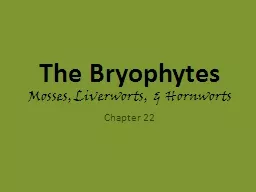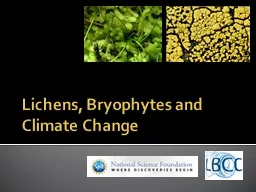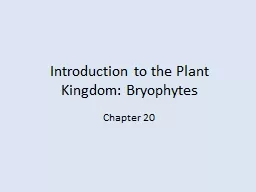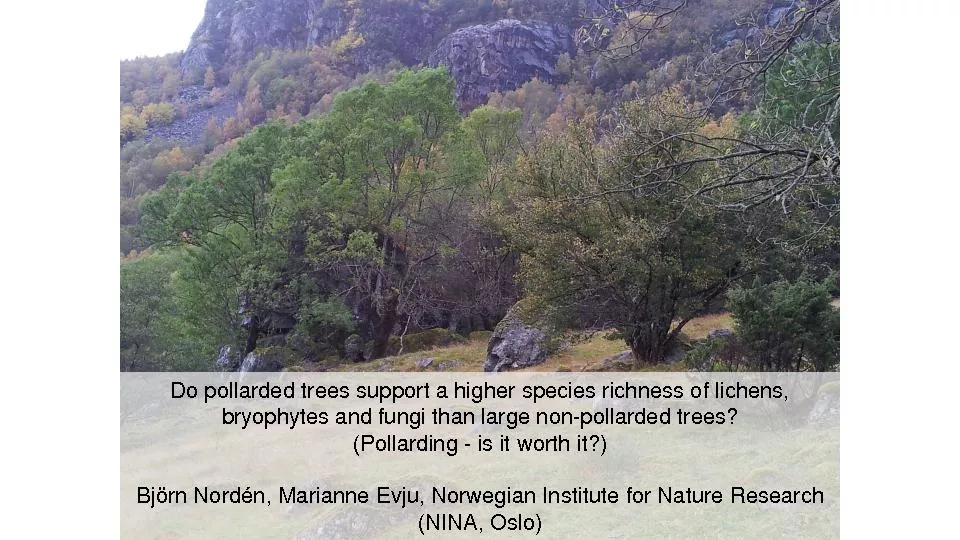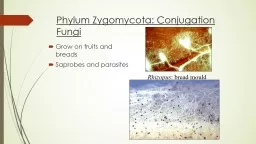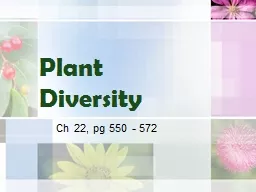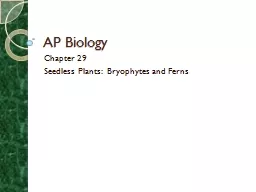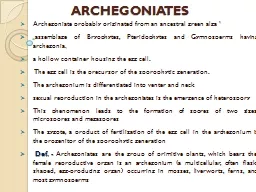PPT-The Bryophytes
Author : yoshiko-marsland | Published Date : 2017-12-20
Mosses Liverworts amp Hornworts Chapter 22 Evolution of Land Plants Land plants evolved from green algae Evidences Share chemical amp metabolic traits Same photosynthetic
Presentation Embed Code
Download Presentation
Download Presentation The PPT/PDF document "The Bryophytes" is the property of its rightful owner. Permission is granted to download and print the materials on this website for personal, non-commercial use only, and to display it on your personal computer provided you do not modify the materials and that you retain all copyright notices contained in the materials. By downloading content from our website, you accept the terms of this agreement.
The Bryophytes: Transcript
Download Rules Of Document
"The Bryophytes"The content belongs to its owner. You may download and print it for personal use, without modification, and keep all copyright notices. By downloading, you agree to these terms.
Related Documents

